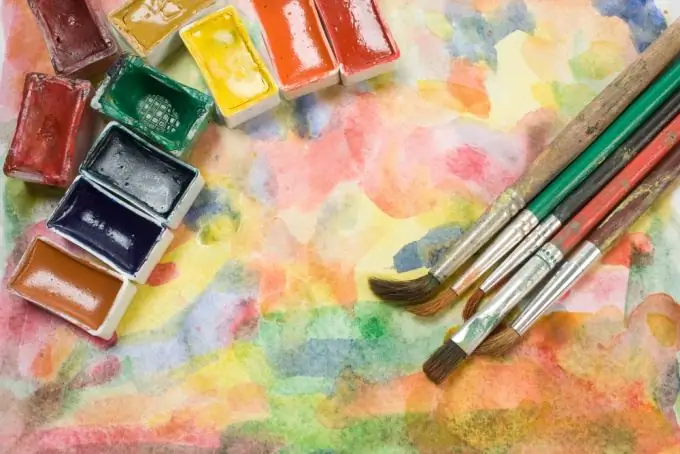Landscapes, still lifes and portraits made in watercolors are light and transparent. Not surprisingly, many people want to learn how to use this technique. Learning to paint with watercolors is not as easy as it might seem. You need to be patient and follow the basic rules.

First of all, get quality materials and tools. Good watercolors aren't cheap, but you don't have to buy large sets right away. To get started, you need two squirrel brushes - 3-5 mm for small details and 1 cm for the background. The brushes should be soft and should form a sharp tip when wet. You can take another flat, hard brush, which is convenient for removing excess paint. Watercolor paper should be thick and textured. A plastic palette is suitable for mixing paints, the cells of which must be sanded before work so that the paints do not roll off in them.
Before starting to paint, secure the paper to a flat surface. Prepare a large jar of clean water and a soft cloth on which you can blot your brush.
Draw out the outline of the drawing with thin pencil lines. Since there is no white paint in watercolors, immediately determine which areas need to be left clean. Some artists advise rinsing the sheet under running water before applying paint to remove graphite residues, dust and grease stains.
Draw with watercolors from top to bottom. First draw the background, and when it dries up, you can start to detail. To work on the background, use a large brush to paint well diluted with water, and walk horizontally across the paper. When thinning paint, remember that the watercolor brightens after drying. Do not apply more than three coats of paint, otherwise the transparency that watercolor is valued for will disappear.
For details, dip the tip of a thin brush in paint and paint while holding the brush vertically.
Practice wiping off the top coat of paint with a stiff brush dampened in water. This will help in depicting faint or semi-transparent objects. Clouds work well by blurring the background with a large, clean, damp brush. If you are mistaken somewhere, it is easy to wash off the paint in a certain area under running water. Dried watercolors will not suffer too much.
Experiment with shades and different ways of painting, and very soon you will develop your own special style.






